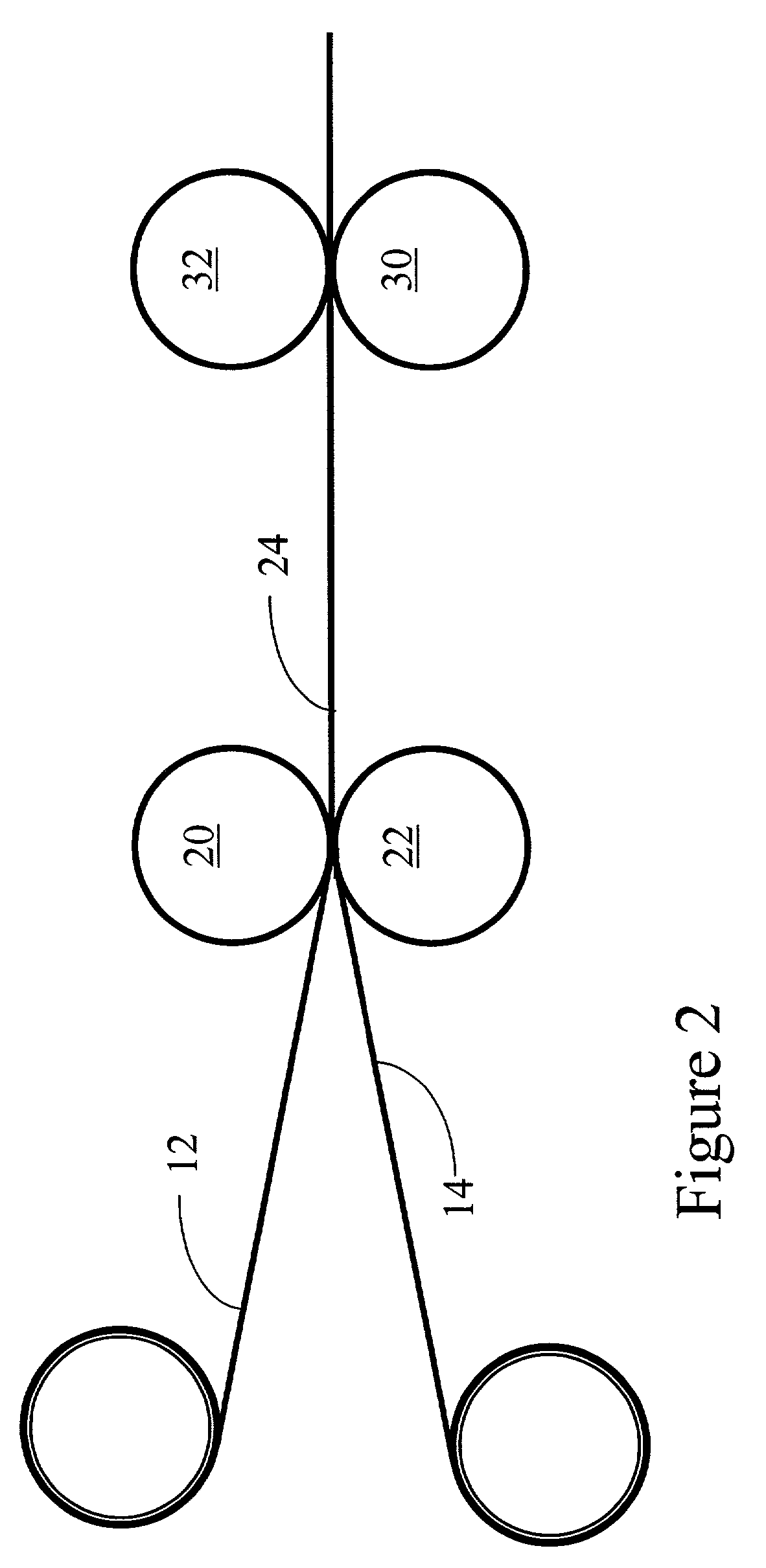Method for preparing composite flexible graphite material
a graphite material and flexible technology, applied in the field of materials, can solve the problems of less than ideal compromise on key structural and performance criteria, reduce the effectiveness of articles per unit cost and per unit weight, and increase the cost of articles being produced, so as to reduce the level of voids in sheets, improve product performance, and reduce electrical and thermal resistance
- Summary
- Abstract
- Description
- Claims
- Application Information
AI Technical Summary
Benefits of technology
Problems solved by technology
Method used
Image
Examples
example 1
[0083]This example illustrates the production of a composite stock material, suitable for embossing to form fuel cell fluid flow field plates, and the like. Two sheets of resin impregnated graphite foil are provided. One consists of a material that has a thickness of 1.0 mm and a density of 0.75 grams / cc. The other has a thickness of 1.0 mm and a density of 1.0 grams / cc. The sheets are layered and then compressed between a pair of nip rolls spaced at 1.5 mm, with the result that the two sheets are consolidated into a single composite having zones of differing densities through thickness.
example 2
[0084]The procedure of Example 1 is repeated, but this time the first layer is 0.25 mm in thickness, has a density of 1.0 grams / cc and is not resin impregnated.
example 3
[0085]The procedure of Example 1 is repeated, but this time one of the layers is not a solid sheet but rather contains cut-out regions, in this one case, a frame of material. This allows for the creation of a single composite having zones of differing densities through thickness and in-plane.
PUM
| Property | Measurement | Unit |
|---|---|---|
| density | aaaaa | aaaaa |
| density | aaaaa | aaaaa |
| density | aaaaa | aaaaa |
Abstract
Description
Claims
Application Information
 Login to View More
Login to View More - R&D
- Intellectual Property
- Life Sciences
- Materials
- Tech Scout
- Unparalleled Data Quality
- Higher Quality Content
- 60% Fewer Hallucinations
Browse by: Latest US Patents, China's latest patents, Technical Efficacy Thesaurus, Application Domain, Technology Topic, Popular Technical Reports.
© 2025 PatSnap. All rights reserved.Legal|Privacy policy|Modern Slavery Act Transparency Statement|Sitemap|About US| Contact US: help@patsnap.com



